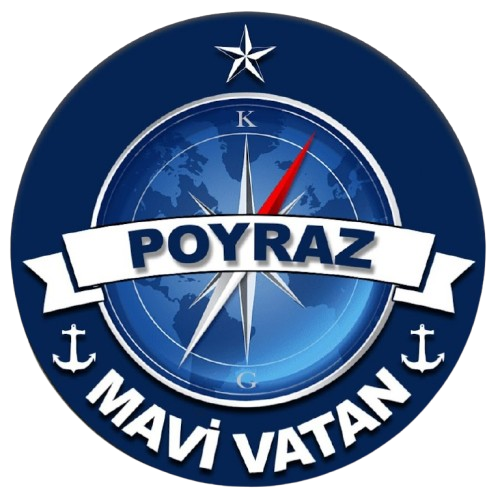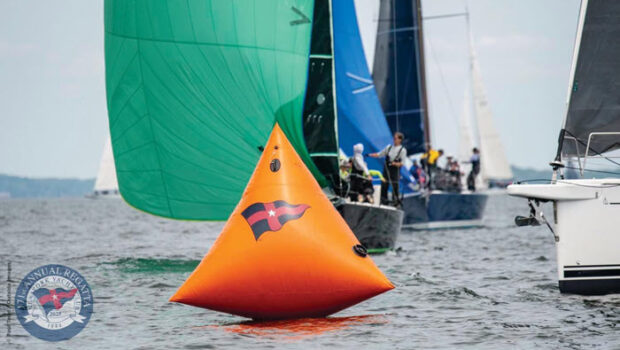Sometimes a regatta win is just that. Sometimes it can mean a little bit more. For those looking for a splash of positivity that extends well beyond the racecourse, an example stood out at New York Yacht Club’s 171st Annual Regatta on June 13-15 in Newport, RI.
On Friday, in the standalone Around-the-Island Race that has led off the regatta for more than three decades, the U.S. Coast Guard Academy on the Swan 53 Elan took nearly four hours to sail the 19-mile lap of Conanicut Island and finished last of 15 boats in their class and 51st of the 54 PHRF boats that finished the race.
“The boat that we sailed in this regatta was new to us as of this week,” says Meara Conley, the team’s main trimmer. “The first time that we sailed it was Thursday. We really didn’t know how to sail the boat, so Friday was kind of rough.”
However, the racing on the weekend was another story as the cadets that will soon be tasked with defending our shores effected a dramatic transformation. Racing in Navigator Course C, Elan won the first race and then added another second to close out the first day of the weekend series. A second in Sunday’s only race secured a convincing 10-point overall win in one of the biggest classes in North America’s oldest regatta.
One night is not usually enough time to completely reshape a sailing team, but the crew on Elan was not deterred by the short time frame.
“I think on Friday, we didn’t really know what we were doing or how to sail the boat,” says Conley. “I think this is the biggest boat any of us have really sailed. Friday was really a learning experience. What helped us on Saturday was getting people who knew what they were doing in the right positions and figuring out what worked for the boat. On Friday, we didn’t have a lot of communication, so we worked on that a lot. Communication is key with big-boat sailing.”
The Coast Guard team is an amalgam of sailors who predominantly sail big boats and members of the school’s nationally-ranked dinghy team.
“I’m a dinghy sailor myself,” says Conley. “I don’t do a lot of big-boat racing. And then we have a lot of big-boat racers. So, it’s cool to watch how all the offshore team includes all the dinghy people, and we really put our brains together.”
Another team that rebounded from a tough start was Andrew Berdon’s 52-foot Summer Storm. In Saturday’s first race—sailed in 15- to 20-knot winds and lumpy, off-axis 6-foot seas—the team struggled with a spinnaker douse, dropping the sail into the water and retiring from the race.
With a no-throwout series, a Did Not Finish in the first race can be fatal. But Berdon and his crew rebounded with two seconds on Saturday and then a perfect run of three firsts on Sunday. They were able to claim first place in the Mixed Course ORC division courtesy of a tie-breaker.
“We definitely kind of stubbed our toe [on Saturday], and we came in and had a little chat among the group about what went well and what didn’t go well,” says Ben Bardwell, the team’s bowman. “We went out Sunday and honestly just executed the points that we talked about in the debrief over dinner the night before. We followed our game plan and executed it, and it worked out well. It was a great day of sailing.”
The biggest class in the regatta was the 23-boat IC37 class. Hannah Swett and Team MO started off with a pair of seconds to take an early lead. However, a collision in Race 3 nearly took them out of the running when they were forced to withdraw from the race.
Thanks to the quick work of the New York Yacht Club’s IC37 charter boat program team and a successful redress hearing, Team MO were back in their boat on Sunday with a 9-point lead over second place. A third and a fourth all but locked up the overall win. A subpar last race served only to tighten up the final standings. MO took first by six points over Lance Fraser’s Defiant with Steve Liebel’s New Wave in third a point further back.
“It was a really fun event,” says Swett. “As ever, the New York Yacht Club did a great job. And it was fun having a few little twists to the event, like having a race into the harbor [on Saturday afternoon]. We enjoyed ourselves immensely.
“Our group has sailed together for a while, so I think we just came out running. It got a little light in the last race, and I think we were pretty deep in the fleet. It’s an amazing fleet. Everyone is really good and going fast in every direction.”
Earlier this year, Swett and her team were selected to represent the host club in the Rolex New York Yacht Club Invitational Cup, a prestigious Corinthian competition that will take place in September. So while a win is always nice, the team’s primary goal lies a few months down the road.
“We see every event between now and September as practice,” says Swett. “So we’re always trying to get better at starts and mark roundings and speed. So really, everything we’re doing is preparing for September. We made a lot of mistakes, and I think that the biggest thing to takeaway is to never give up. [Every boat goes] pretty close to the same speed. Every inch counts.”
Another one-design class that enjoyed very competitive racing during the Annual Regatta is the M32 class. These 32-foot catamarans are a bit of an outlier for the Annual Regatta and enjoy their own brand of racing with reaching starts and short, sharp races.
After nine races, it was Ryan McKillen’s Surge that came out on top, three points ahead of Bobby Julien’s Dingbat. This is Surge’s fourth consecutive win in the class, which enjoys a winter schedule in Miami before relocating to Newport for the summer.
“This is my fourth or fifth year in the class,” says McKillen. “The secret is just a lot of time on the water; it’s finally starting to come together. Sailing, especially in these boats, is so dynamic. It can take four or five years before you start seeing the same situations again, and once that happens, it gets a little easier. It starts to feel familiar. There’s no magic bullet, just time and reps.”
SCUTTLEBUTT News Link !
DemirHindiSG 19 Haziran 2025-17:04







